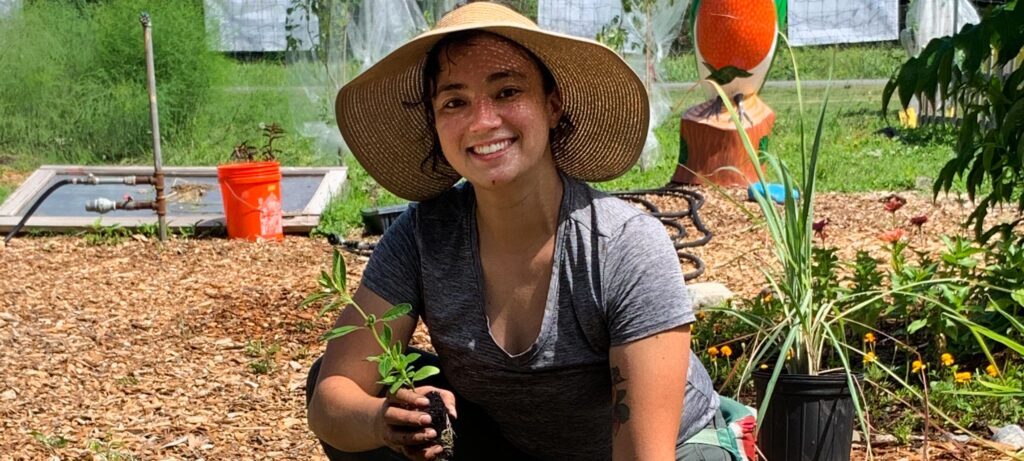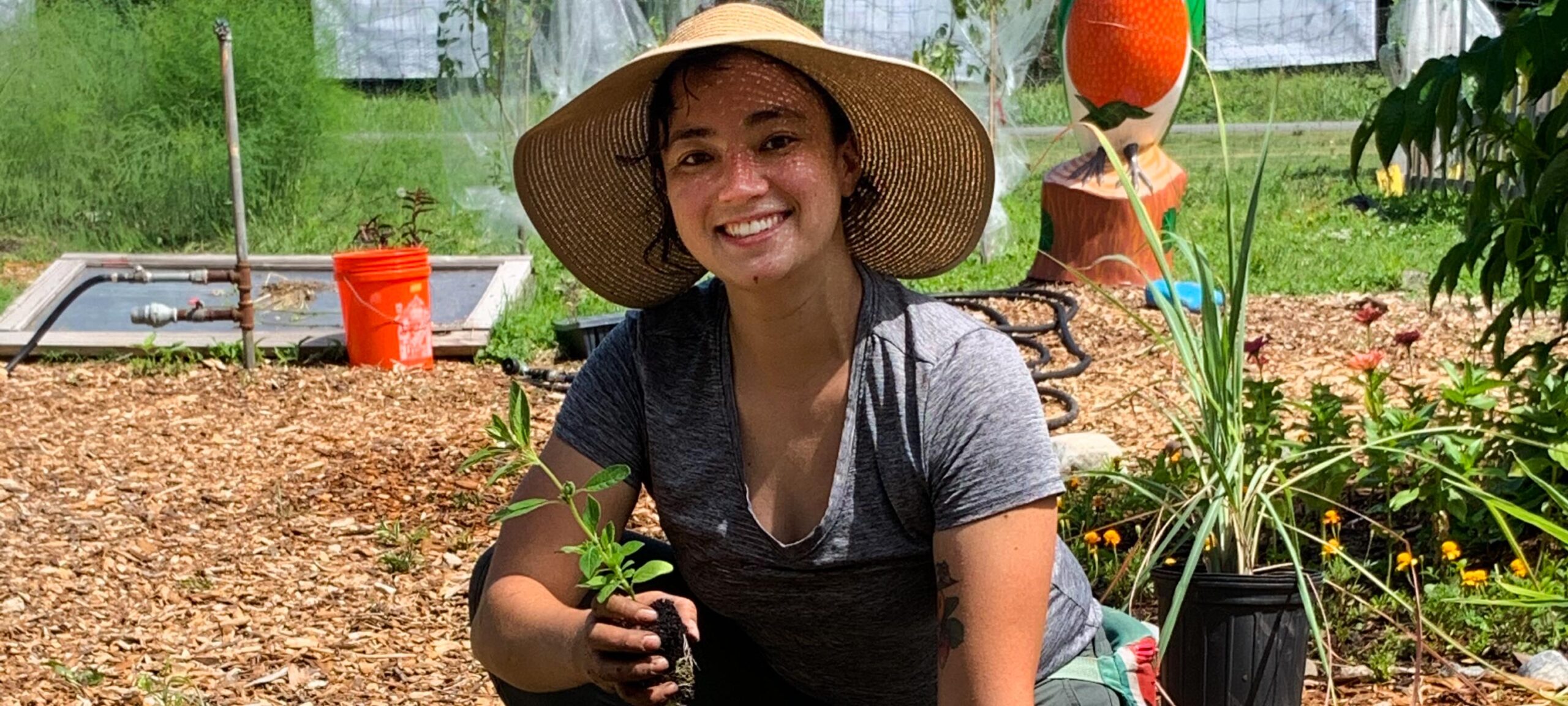Emilia’s Garden Tips: Keeping Low-Maintenance Gardens Over Summer
Step 1: Plant for Back to School Harvests & Lessons
These crops need plenty of water at first to germinate but once the plant is established, it will be okay with rain and mulch to keep the soil moist:
- Bush beans: approx 60 days to maturity from seed; will have mature bean pods for seed harvesting lessons/seed saving
- Melons: approx 80-100 days to maturity; needs a lot of space to spread
- Sunflowers: approx 90-120 days to maturity; there are dwarf varieties as well if looking for something not so tall
Additional Resource: What to Plant Now (March-May) from Love & Carrots and Chaia
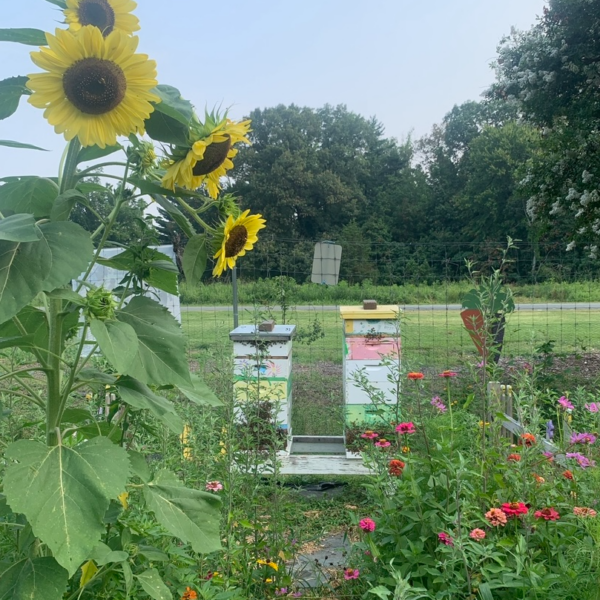
Sunflowers growing in Washington Youth Garden.
Step 2: Apply Mulch
Mulching will help retain moisture, suppress weed growth, and protect the soil during the summer.
This method is great for when your beds have crops growing but also when there is nothing intentional planted.
Using straw, leaves, or other organic matter to layer on top of the bare soil will prepare a garden for fall planting upon returning from break!
Step 3: Plant Cover Crops
Another option for summer beds is planting cover crops, which are plants that are planted to cover the soil rather than to be harvested and act like a living mulch!
Cover crops help manage soil erosion, soil health, weeds, pests, and are low maintenance. They also attract pollinators!
Some summer cover crop options are:
- Sudangrass (grows tall & fun to shake when starting to bloom to illustrate wind pollination)
- Buckwheat (small white flowers)
- Sun hemp (clusters of yellow flowers)
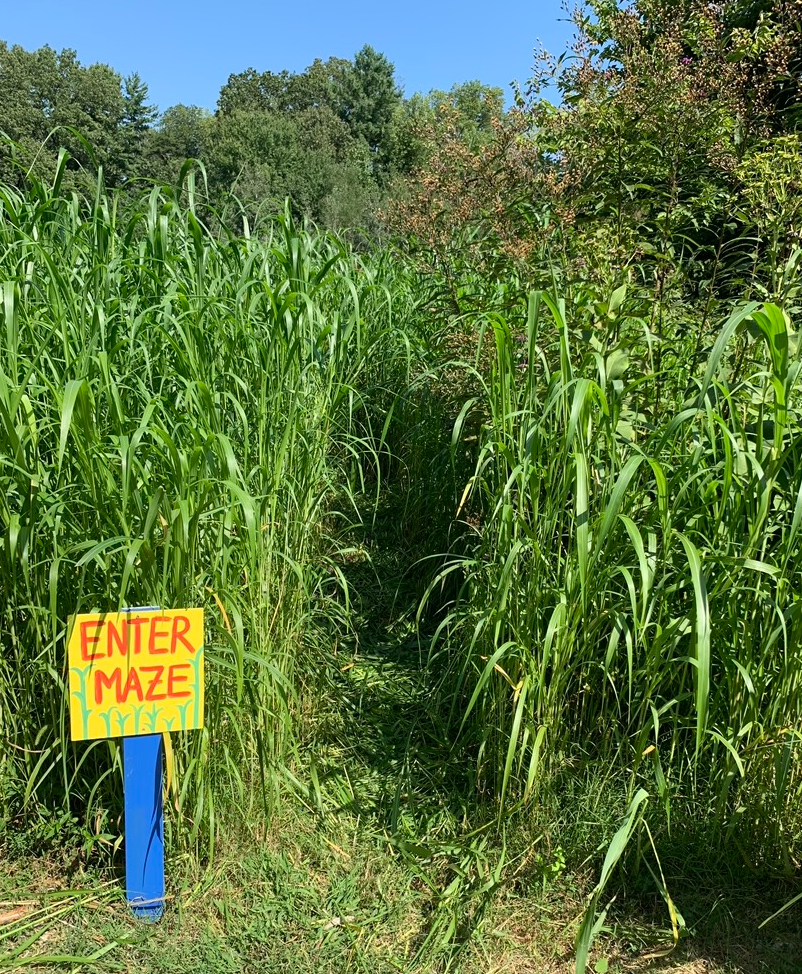
Sudangrass growing as a maze in Washington Youth Garden.
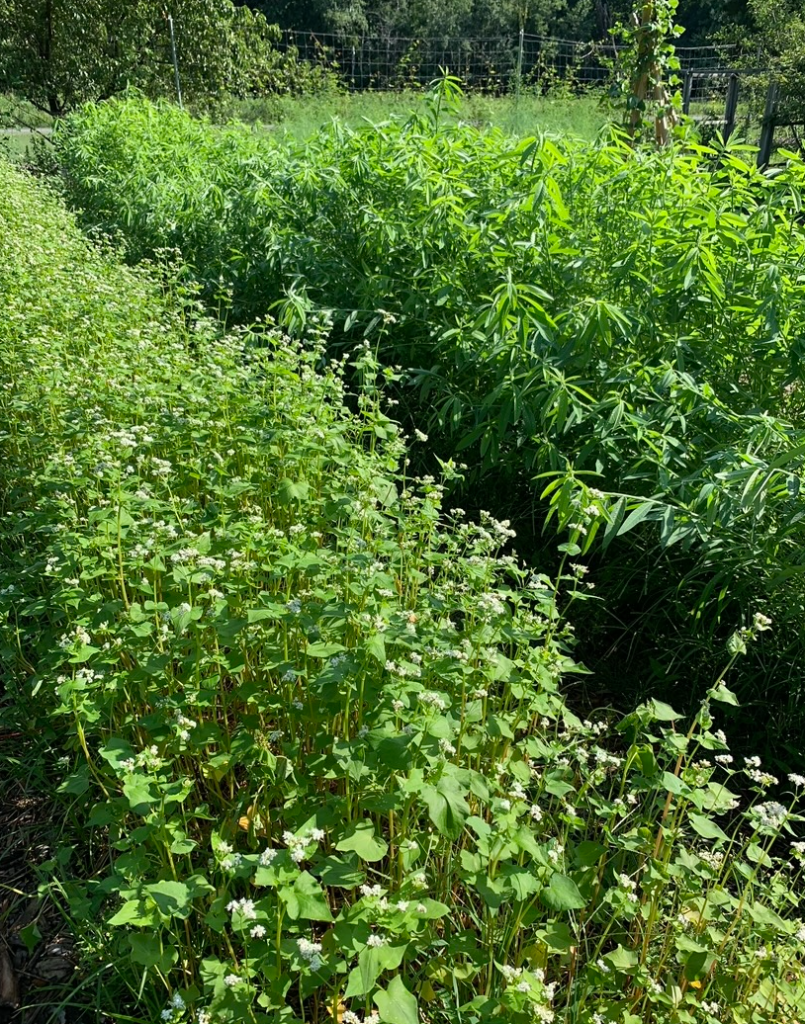
Buckwheat (bottom left) and sun hemp (top right) growing as cover crops in Washington Youth Garden.


